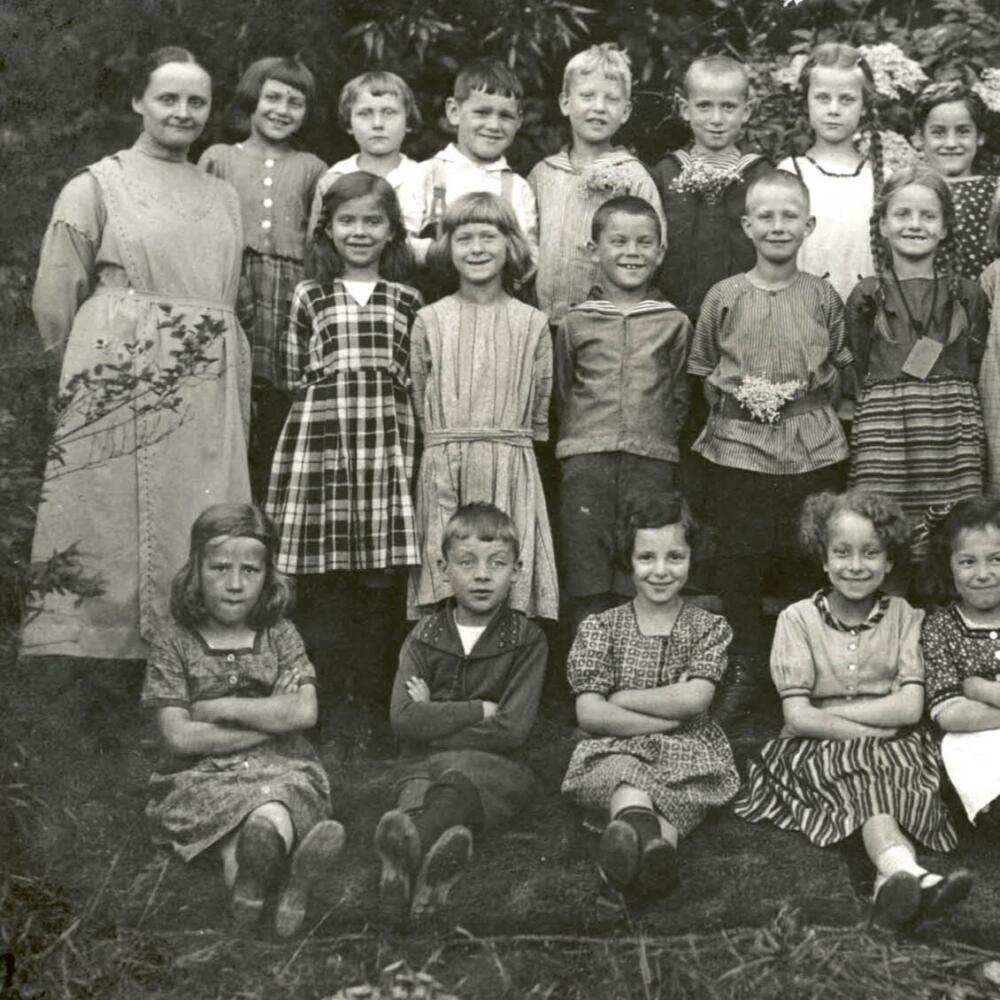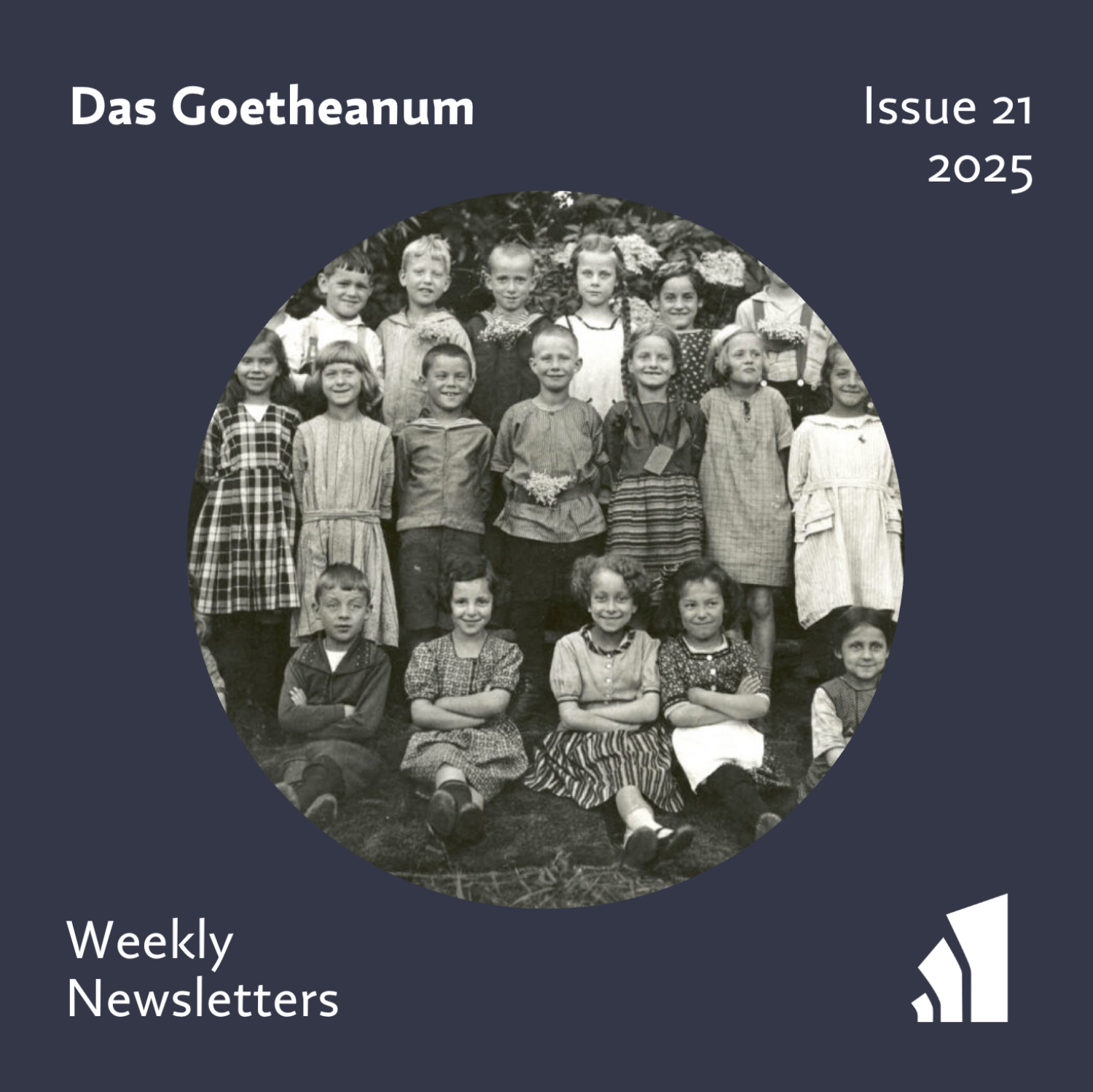For the Children
As the longing and call for independent schools grew in many places, Rudolf Steiner responded to the question of a friend and the question of an entire era by founding the Waldorf School—an impulse for children all over the world.[1]
One hundred years after the first Waldorf school was founded, there are now 200,000 pupils attending Waldorf schools in Europe alone. At the same time, Steiner’s educational ideas are also being developed in many state schools across the world. Rudolf Steiner was a teacher himself. He learned to learn, as he recounts looking back: “From the age of fifteen, I gave private tutoring lessons. . . . I learned about the difficulties of human soul development from my pupils.”[2] Rudolf Steiner’s experience as a young private tutor in Vienna with the child Otto Specht[3] as an “educational task became a rich source of learning for me. The educational methods I had to apply gave me an insight into how the spiritual and soul aspects of the human being connect with the physical.”[5] Years later, in 1906, Steiner spoke about education oriented around the child—and published The Education of the Child from the Viewpoint of Spiritual Science [original German title: Die Erziehung des Kindes vom Gesichtspunkte der Geisteswissenschaft]. This was not a theory of child development, rather it was a call to awaken to the reality of becoming that is occurring within the child.
School as a “Force for Change”
The question posed to Rudolf Steiner about founding a school arose from social concerns: the poverty, destruction, and hardship during and after World War I. Many voices addressing these concerns spoke out about the need for a new form of education. In Barcelona, Francesc Ferrer i Guàrdia founded the Escuela Moderna [Modern School]. The state and the church were not to have any influence on the school. A rapidly growing school movement emerged, which by 1905 already comprised 147 schools in the province of Barcelona and three years later was represented throughout Spain, Portugal, São Paulo, Lausanne, and Amsterdam.5 Ferrer wrote in his book La Escuela Moderna [The Modern School], “The task of the Modern School is to ensure that the children entrusted to it are brought up to be good, truthful, just, and free from all prejudice.”[6] The independent school was to be accessible to all children—school fees were paid by families according to their means. In 1909, accused of participating in political uprisings in Barcelona, Ferrer was executed.
In Germany, pacifist and writer Gustav Landauer campaigned for independent schools and gave the call: “Away with state and church interference in our schools! Freedom for schools! Self-determination for parents united in school communities concerning their own children!”[7] The aim was to “bring out what is unique [in each student], to foster it, and thus to make the world something personal, and make the personal into something world-awakening and world-encompassing.”[8] In these years of upheaval, a strong social view and sensitivity towards children went hand in hand.
In Sweden, the educational reformer Ellen Key wrote the book The Century of the Child [original Swedish title: Barnets århundrade, 1900], which was translated worldwide. She had written about Steiner’s Philosophy of Freedom early on and “presented her equally profound and original interpretation of this book in 1898.”[9] By 1905, The Century of the Child had appeared in eight editions in Germany alone. In chapter six, “The School of the Future,” Key writes about her dream for children: “I should like to set down here briefly my dreams of a future school, in which the personality may receive a free and complete self-development. I purposely say ‘dreams,’ because I do not want any one to believe that I am pretending in the following outline to give a reformed programme for the present time.”[10] She claims: “To be able to use one’s eyes in the worlds of nature, man, and art, [and] to be able to read good things—these are the two great ends to which home and school education should direct their course.”[11] The child should be at the center—the methodology should develop from their being.[12]
The work of Martin Buber (1878–1965), a close friend of Gustav Landauer, offers a broad perspective on children and human beings as beings in the process of becoming. At the Third International Educational Conference of The New Education Fellowship in Heidelberg in 1925, which had the theme “The Development of the Creative Powers in the Child,” Martin Buber gave a highly acclaimed speech.[13] He begins immediately with the idea of birth as a fresh start: “In every hour, the human race begins.”[14] He then describes the dual character of the child: on the one hand, their coming into the world as a “given”—this manifests as the child’s life circumstances and heredity—and, on the other, everything that is unpredictable and new. He describes how “what has not been invades the structure of what is, with ten thousand countenances, of which not one has been seen before, with ten thousand souls still undeveloped but ready to develop—a creative event if ever there was one, newness rising up, primal potential might. This potentiality, streaming unconquered, though, much of it is squandered, is the reality [we call] child: this phenomenon of uniqueness, which is more than just begetting and birth, this grace of beginning again and ever again.”[15] Human beings must be found who will still stand up for this “might of newness.”[16] During the years Rudolf Steiner was campaigning for social renewal, visions and perspectives on the child, images of becoming, of the future, and of beginning, were living and being given new formulations.[17]
This text is an excerpt from an article published in the (online exclusive) Goetheanum Weekly. You can read the full article on the website. If you are not yet a subscriber, you can get to know the Goetheanum Weekly for 1 CHF./€.
Title image Stuttgart Waldorf School, Heydebrand class photo, 1920s. Rudolf Steiner Archive.
Footnotes
- Abridged version of the lecture “Die Eröffnung der Freien Waldorfschule und der pädagogische Impuls Rudolf Steiners” [The Opening of the Independent Waldorf School and Rudolf Steiner’s Pedagogical Impulse,”] given at the Goetheanum on February 24, 2025, as part of the lecture series for the 100th anniversary of Rudolf Steiner’s death, “Rudolf Steiner. Signaturen eines Werdens” [Rudolf Steiner: Signatures of Becoming].
- Rudolf Steiner, Autobiography: Chapters in the Course of My Life: 1861–1907, CW 28 (Great Barrington, MA: SteinerBooks, 2006), p. 20–21.
- Cf. Ibid., p. 50 f.
- Ibid., p. 52.
- Pedro Costa Musté, “Biografia sumaria de Francisco Ferrer Guardia” [Brief biography of Francisco Ferrer Guardia] in Francisco Ferrer Guardia, La Escuela Moderna [The Modern School] (Barcelona: Tusquets Editores, 2009), p. 13.
- Francisco Ferrer Guardia, La Escuela Moderna [The Modern School] (Barcelona: Tusquets Editores, 2009), p. 80 f.
- Gustav Landauer quoted in Tilman Leder, Die Politik eines Antipolitikers. Eine politische Biografie Gustav Landauers [The politics of an anti-politician. A political biography of Gustav Landauer] (Hesse: Edition AV, 2014), p. 518; [original publication: “Gemeinschaft” des Sozialistischen Bundes [“Community” of the Socialist Union], “Aufruf zur Freien Schule” [Appeal for an Independent School], Der Sozialist [The Socialist] 2, no. 2 (Jan. 15, 1910): 15–16.]
- Ibid. p. 517.
- Karl Brodersen, “Ellen Key und Rudolf Steiner: Eine Begegnung für die Zukunft. Die Philosophie der Freiheit in Schweden” [Ellen Key and Rudolf Steiner: An encounter for the future. The Philosophy of Freedom in Sweden] Beiträge zur Rudolf- Steiner-Gesamtausgabe [Contributions to the Rudolf Steiner Complete Works] 93/94 (Dornach: Rudolf Steiner-Nachlassverwaltung [Rudolf Steiner Estate Administration], 1986), p. 41.
- Ellen Key, The Century of the Child, translated by Marie Franzos. (New York: G. P. Putnam’s Sons, 1909), p. 233.
- Ibid. p. 268.
- Cf. ibid. p. 280–81.
- Cf. Peter Selg, Constanza Kaliks, Die Gegenwart des Anderen: Über Martin Buber und Franz Rosenzweig [The presence of the other: On Martin Buber and Franz Rosenzweig] (Dornach: Verlag am Goetheanum, 2022), p. 226 ff.
- Martin Buber, “On Education,” in Martin Buber, Between Man and Man, translated by Ronald Gregor-Smith (New York: Routledge, 2002), p. 98.
- Ibid. p. 99.
- Ibid.
- Cf. Rudolf Steiner’s contributions to social renewal in the years after the war: Peter Selg, Rudolf Steiner, Life and Work, vol. 5: 1919–1922: Social Threefolding and the Waldorf School (Great Barrington, MA: SteinerBooks, 2017).


